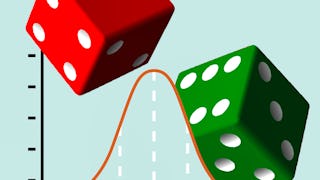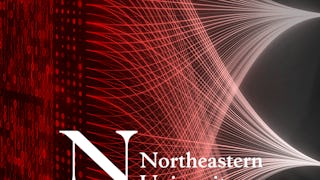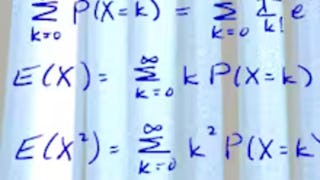Probability and statistics provide an excellent tool for understanding, modeling and communicating uncertainty in engineering systems. In many applications there is the added challenge of considering random quantities that vary over time and/or space. Examples can be found in seismic applications, financial markets, heterogeneous materials, and image processing, among many others. This course provides an introduction into some of the ways in which random processes and random fields are measured, quantified and communicated. Through video lectures, activities, and interactive content, students will learn about correlation functions, spectral density functions, local average processes and Monte Carlo simulation. There will be an emphasis on understanding each concept, estimating these quantities from data, and using this data as the basis for generating realistic sample random processes.


您将获得的技能
要了解的详细信息

添加到您的领英档案
4 项作业
了解顶级公司的员工如何掌握热门技能

该课程共有4个模块
In this module, you will be introduced to some basic definitions of random processes and examples of engineering applications in which they are important. There will also be a review of probability density functions to introduce the marginal distribution that describes a random process.
涵盖的内容
5个视频1篇阅读材料1个作业1个讨论话题
In this module, you will be introduced to the correlation function and correlation length as a means to describe random processes. You will learn to recognize how changes in the correlation function affect the random process, and vice versa. Finally, there will be a case study in which the correlation function & length are calculated based on a given set of data.
涵盖的内容
5个视频1篇阅读材料1个作业1个非评分实验室
In this module, you will be introduced to the spectral density function as an alternative means to describe random processes. You will learn to recognize how changes in the spectral density function affect the random process, and vice versa. Finally, there will be a case study in which the spectral density function & moments are calculated based on a given set of data.
涵盖的内容
6个视频1个作业1个非评分实验室
In this module, you will work with simulation-based approaches to generate random processes, based on the correlation function or the spectral density function. The approach will be applied in the context of reliability.
涵盖的内容
3个视频1个作业2个非评分实验室
位教师

从 Probability and Statistics 浏览更多内容
 状态:免费试用
状态:免费试用Johns Hopkins University
 状态:预览
状态:预览University of Zurich
 状态:预览
状态:预览Northeastern University
 状态:免费试用
状态:免费试用University of Colorado Boulder
人们为什么选择 Coursera 来帮助自己实现职业发展




常见问题
To access the course materials, assignments and to earn a Certificate, you will need to purchase the Certificate experience when you enroll in a course. You can try a Free Trial instead, or apply for Financial Aid. The course may offer 'Full Course, No Certificate' instead. This option lets you see all course materials, submit required assessments, and get a final grade. This also means that you will not be able to purchase a Certificate experience.
When you purchase a Certificate you get access to all course materials, including graded assignments. Upon completing the course, your electronic Certificate will be added to your Accomplishments page - from there, you can print your Certificate or add it to your LinkedIn profile.
Yes. In select learning programs, you can apply for financial aid or a scholarship if you can’t afford the enrollment fee. If fin aid or scholarship is available for your learning program selection, you’ll find a link to apply on the description page.
更多问题
提供助学金,



